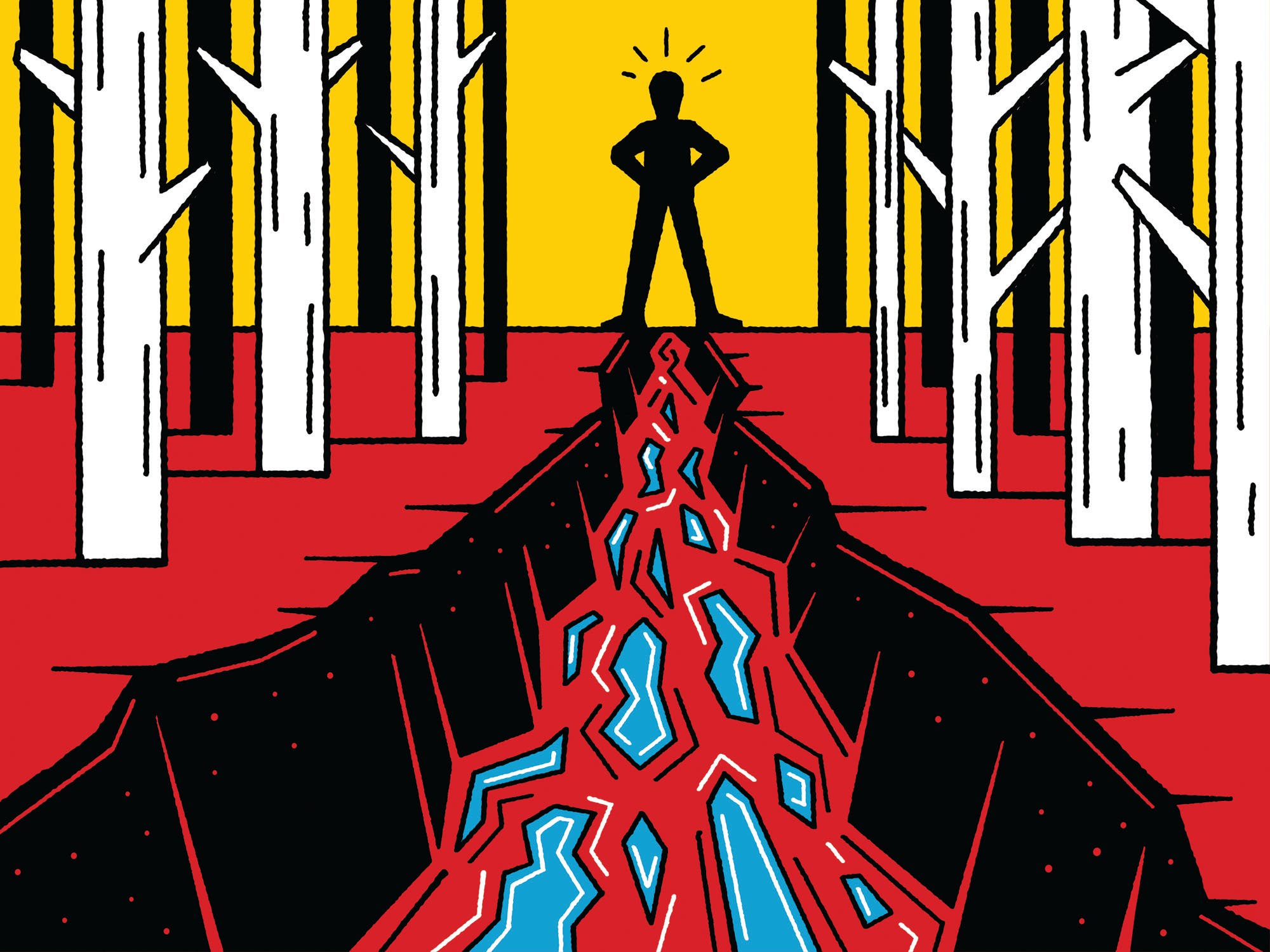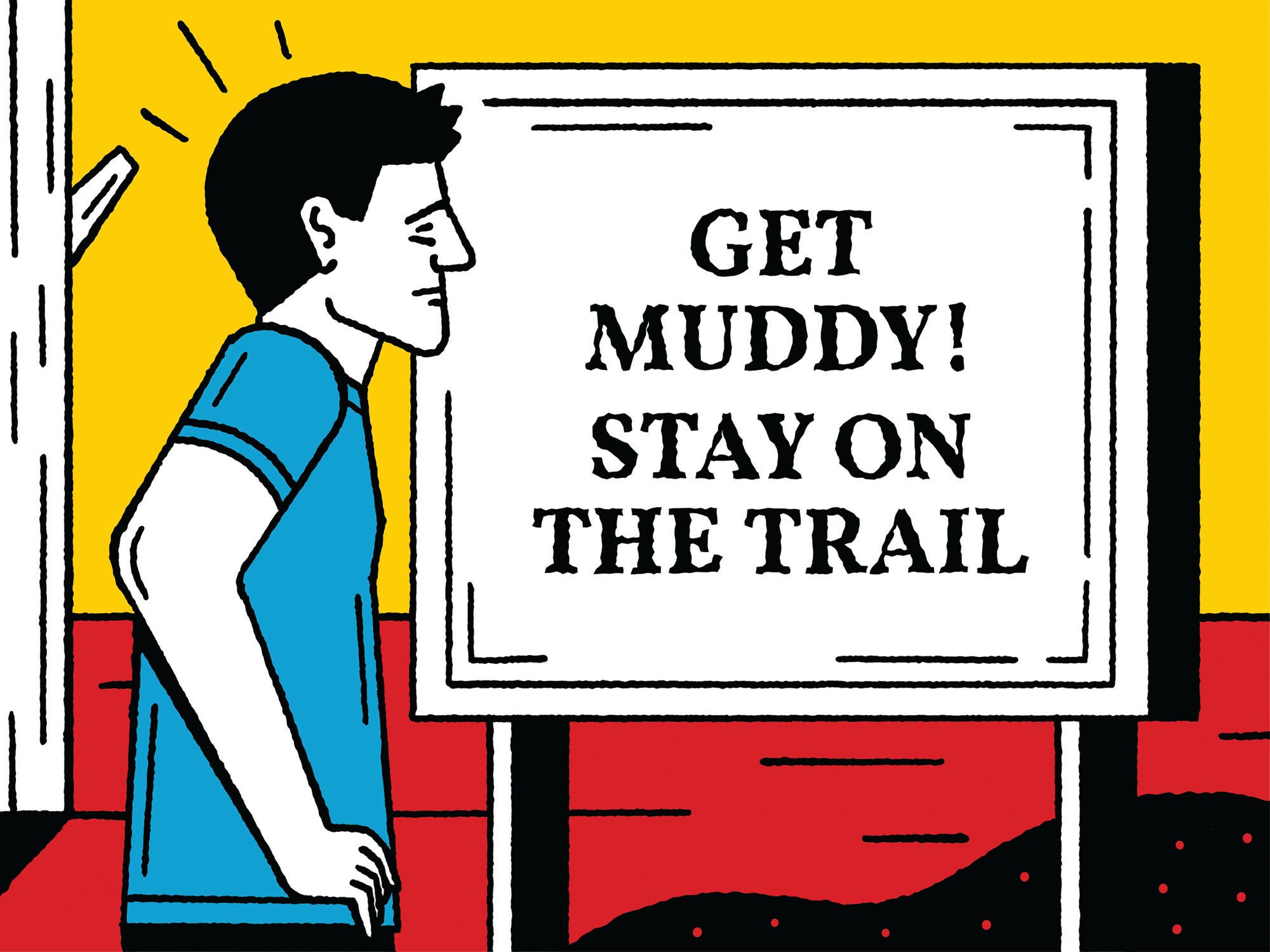Seriously: Stop Walking Around the Muddy Parts of the Trail

'Maldo Malacek'

The sign at the trailhead said “get muddy—stay on the trail,” but the “trail” was a moat, and I was wearing trail runners. I know I wasn’t supposed to, but I opted for the strip of grass beside it. Is that really such a big deal?
–Mud-averse in Milwaukee

Dear Mud-averse,
It’s easy to defend the choice to stay dry by saying you’re protecting the trail from getting trenched out, but take a look at the implication: that the trail itself is more important than the area and vegetation it travels through.
Widening the trail by another foot might not seem like a big deal, but it expands the amount of compacted ground, resulting in loss of native plant species (and invasion of weeds) and more square footage that’s subject to erosion. All that adds up to double the mud problem next time around—and double the work for volunteer trail builders. [Ed. note: In some especially muddy areas, trails are closed seasonally to protect against damage. Check with local land managers before heading out.]

If you know it’s going to be muddy, pack appropriate footwear and gaiters, and do what the sign says and get dirty. Your trail runners will make out better than the trail, guaranteed. Or better yet: Embrace spontaneity, pick a new route whenever you see muddy trail, and come back when the trenches are dry.
Do the Right Thing
Those volunteers we mentioned? Time to make their acquaintance. Sign
up for a day of work with your local trail club. Bonus if you spend the time hacking out invasive weeds. And wear boots.
Got a confession? Email us at confessions@backpacker.com.
For more info about reducing your impact, visit Leave No Trace’s site.